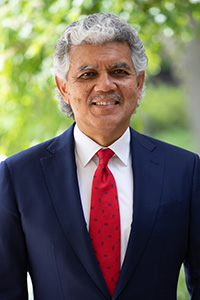
Wayne State University’s reputation as a national model for student success is growing. The university’s six-year graduation rate has once again improved, it continues to close the student success equity gap among students of color, and a new report has recognized Wayne State as the best university in Michigan in helping students achieve socioeconomic growth.
WSU’s new six-year graduation rate is 55.8%, a 3.9 percentage point increase over last year, and an astounding 115% improvement in the last decade from 26%.
Gains have been particularly significant among Black students. The current Black graduation rate is 34.6% — a 9.8 percentage point jump from just last year, and an astonishing 355% improvement in the last decade from 7.6%.
To put these gains in context, in 2018 the Association of Public Land-grant Universities (APLU) awarded Wayne State with its 2018 Project Degree Completion Award for improving its graduation rate by 21 percentage points over seven years, or an average of about three percentage points a year, which was the best in the country. Wayne State’s Black graduation rate is up almost 10 percentage points since just last year. Improvements have also been made among Wayne State’s Latinx, first-generation and low-income students.

“This progress is the result of determination, innovation, and passionate commitment, campus-wide, from our faculty, staff, campus leaders, and the students themselves,” said Monica Brockmeyer, senior associate provost for Student Success. “While we are proud of our strides, we know we cannot rest – especially in light of new challenges arising from the global pandemic and other societal adversities.
"And we won’t rest, until every Wayne State student has the opportunity to learn, to thrive in college, to graduate in a timely manner and to enjoy the benefits of a college degree throughout their lives.”
Despite national reports that educational gaps in access, achievements and outcomes that existed before the pandemic are widening for underrepresented students, Wayne State also continues to make progress on its goal to close its student success equity gap.
| Graduation Rate Gains | 2021 | One year ago | 10 years ago |
|---|---|---|---|
| Overall | 55.8% | 51.9% | 26.0% |
| Black Students | 34.6% | 24.8% | 7.6% |
| Hispanic/Latinx Students | 38.4% | 35.2% | 16.7% |
| First Gen Students | 44.6% | 43.0% | 18.4% |
| Low Income Students | 47.3% | 44.8% | 16.1% |
Nationally, in 2019 Black undergraduates were 24 percentage points less likely to graduate within six years than white students. To address the issue, the APLU initiated a major initiative, Powered by Publics, to scale student success and achieve parity in graduation rates by race/ethnicity. Because of Wayne State’s reputation for innovation on this topic, it was selected to lead the Urban Cluster of 11 institutions.
Participating universities were asked to commit to the aggressive goal of boosting Black graduation rates by 2.7 percentage points a year. Then, in 2020, to reduce the time to reach equity in graduate rates, Wayne State voluntarily committed to double that goal to a 4.6 percentage points annual improvement.

“To move the needle on underrepresented graduation rates is very difficult, so asking universities to improve by almost 3 percentage points a year is truly a stretch goal,” said WSU President M. Roy Wilson. “So, for Wayne State to improve almost 10 percentage points in a single year on its Black graduation rate is remarkable. I am extremely proud of our staff who have taken this as a personal challenge and put a lot of effort into this.”
Wayne State’s targeted rate of increase should lead to parity for Black students at the university in 2030 — five years ahead of the APLU’s stretch goal.
All of these advances are paying off — literally — for Wayne State students. The U.S. News & World Report 2022 Best Colleges rankings identified Wayne State as one of the top-performing schools in the nation — and the best in Michigan — at helping economically disadvantaged students succeed and graduate.
Wayne State is ranked 66th in the nation and first in Michigan for the social mobility it provides for its students.
The ranking is calculated by looking at the number of students who enroll and graduate and who received Pell Grants. Students who receive Pell Grants typically come from households with family incomes of less than $50,000.
According to U.S. News, “Economically disadvantaged students are less likely than others to finish college, even when controlling for other characteristics. But some colleges are more successful than others at advancing social mobility by enrolling and graduating large proportions of disadvantaged students awarded with Pell Grants.”
All of the aforementioned gains were made possible through the Student Success Initiative that started a decade ago with the hiring of more than 45 academic advisors and other academic staff, and evolved to include more than 150 projects and initiatives to support students.
